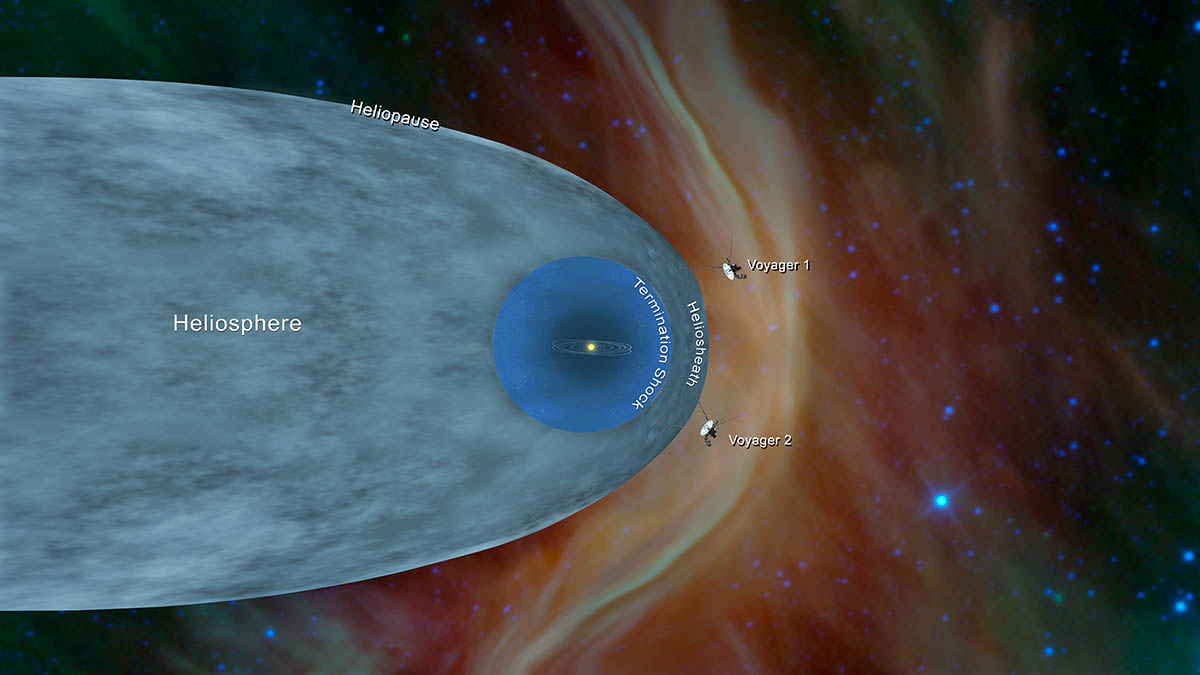This illustration shows the position of NASA’s Voyager 1 and Voyager 2 probes, outside of the heliosphere, a protective bubble created by the Sun that extends well past the orbit of Pluto. Voyager 1 exited the heliosphere in August 2012. Voyager 2 exited at a different location in November 2018. (NASA/JPL-Caltech)
Home This illustration shows the position of NASA’s Voyager 1 and Voyager 2 probes, outside of the heliosphere, a protective bubble created by the Sun that extends well past the orbit of Pluto. Voyager 1 exited the heliosphere in August 2012. Voyager 2 exited at a different location in November 2018. (NASA/JPL-Caltech) This illustration shows the position of NASA's Voyager 1 and Voyager 2 probes, outside of the heliosphere, a protective bubble created by the Sun that extends well past the orbit of Pluto. Voyager 1 exited the heliosphere in August 2012. Voyager 2 exited at a different location in November 2018. (NASA/JPL-Caltech)
This illustration shows the position of NASA’s Voyager 1 and Voyager 2 probes, outside of the heliosphere, a protective bubble created by the Sun that extends well past the orbit of Pluto. Voyager 1 exited the heliosphere in August 2012. Voyager 2 exited at a different location in November 2018. (NASA/JPL-Caltech)



